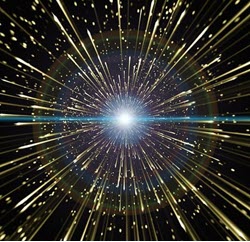In the world of entertainment, few franchises have stood the test of time quite like Godzilla. The towering, monstrous figure has captured the hearts and imaginations of audiences worldwide for generations. But how did this iconic creature come to be? To understand Godzilla’s origins, we must rewind the clock to a time when the world was on the brink of nuclear war.
The year was 1954, just a few years after the devastation of Hiroshima and Nagasaki during World War II. Japan was still reeling from the horrors of nuclear warfare, and the fear of another bomb attack loomed large. It was in this tense atmosphere that the first Godzilla film was born.
Directed by Ishiro Honda, the original Godzilla film was a powerful allegory for the destructive power of nuclear weapons. The titular monster, a gigantic, fire-breathing reptile awakened and mutated by nuclear radiation, wreaked havoc on the city of Tokyo. The film’s themes of destruction, fear, and the consequences of humanity’s arrogance struck a chord with audiences and critics alike.
Godzilla’s design was a masterstroke of creativity, blending elements of various prehistoric creatures with a touch of sci-fi flair. The iconic roar, created by manipulating the sound of a leather glove rubbed against a double bass string, added to the creature’s mystique and otherworldly presence.
Following the success of the original film, Godzilla quickly became a cultural phenomenon, inspiring a slew of sequels, spin-offs, and merchandise. The monster was no longer just a symbol of nuclear destruction but also a symbol of resilience, standing firm against all manner of foes, from space aliens to robotic doppelgangers.
Through the decades, Godzilla has evolved and adapted to changing times, remaining relevant and beloved by fans young and old. The kaiju (Japanese for strange beast) has crossed over into various mediums, from comics and video games to animated series and Hollywood blockbusters.
Despite the many incarnations and interpretations of Godzilla over the years, the core message of the franchise remains the same: the consequences of our actions are far-reaching and can have unintended, devastating effects. Godzilla serves as a reminder of the awesome power of nature and the folly of playing god with forces beyond our control.
As we look back on the enduring legacy of Godzilla, it’s clear that the monster’s appeal lies not just in its size and strength, but in its ability to mirror our own fears, hopes, and struggles. Whether battling other monsters or serving as a protector of Earth, Godzilla stands as a symbol of our capacity for destruction and our potential for redemption.
In the end, Godzilla is more than just a monster – it is a reflection of ourselves, a testament to the enduring power of storytelling, and a reminder that even in the face of unimaginable horrors, there is always hope for a brighter future.

